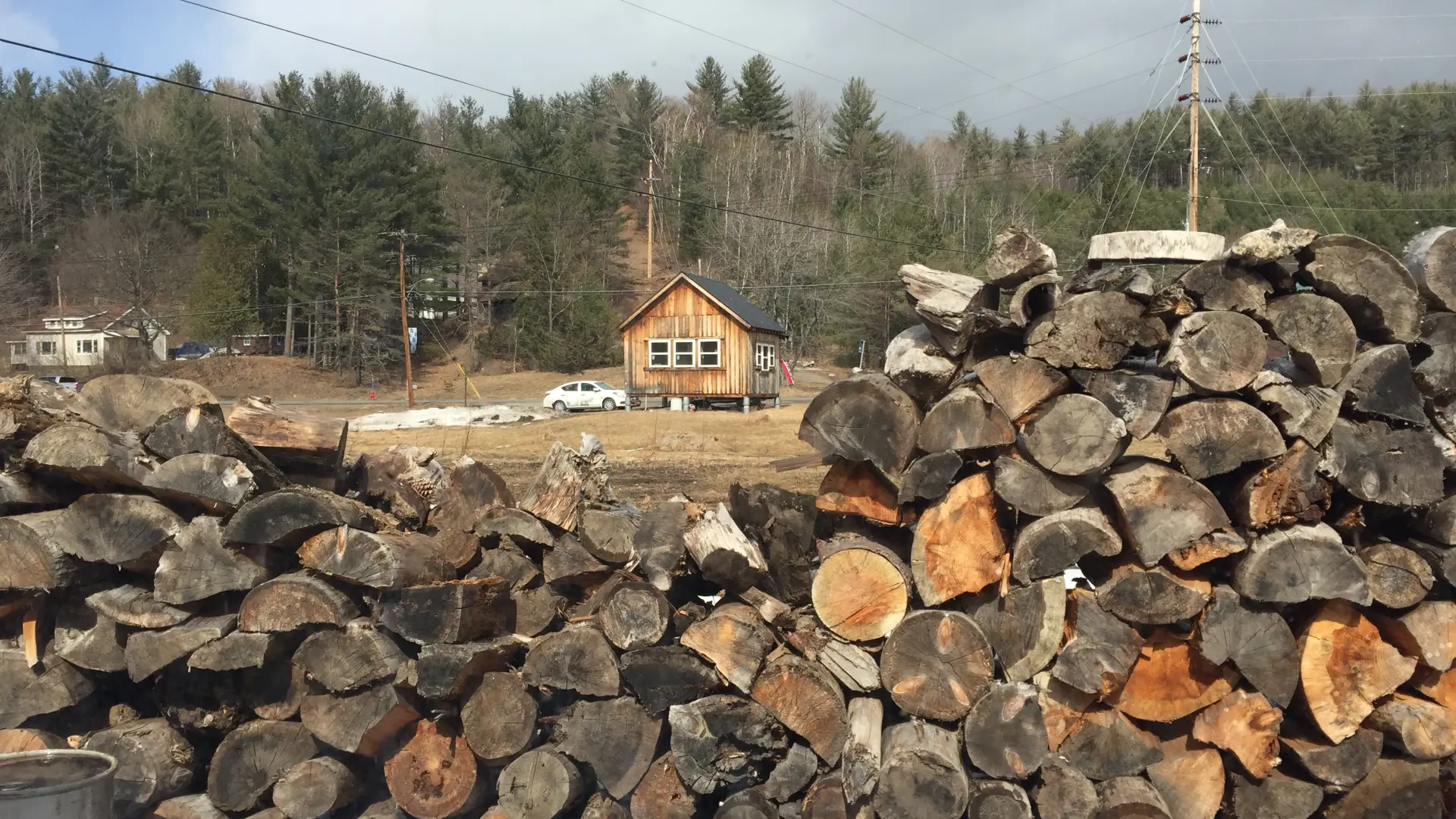
When driving on Route 73 in Keene you will pass an unassuming shack on the side of the road. Look for the giant sign shaped like a maple syrup bottle. This is Black Rooster Maple, and inside this shack you will find local, delicious maple syrup products, produced behind this shack. If you look a little further you will see the sugarhouse where the magic happens. I met with Kirk Bassarab on one of the sunniest days in March, the onset of maple season, to talk about his maple business, which has successfully ballooned from a twelve-tap, one-gallon project he shared with his partner in their first home into 3,500 taps and a 6,500 gallon project in nearly ten years. You can find Black Rooster Maple products on the side of the road, at farmers markets, and online. Read on to learn more about the sweetness behind the syrup.

How it’s made
The process of making syrup is two major steps: boiling water and concentrating sugars.
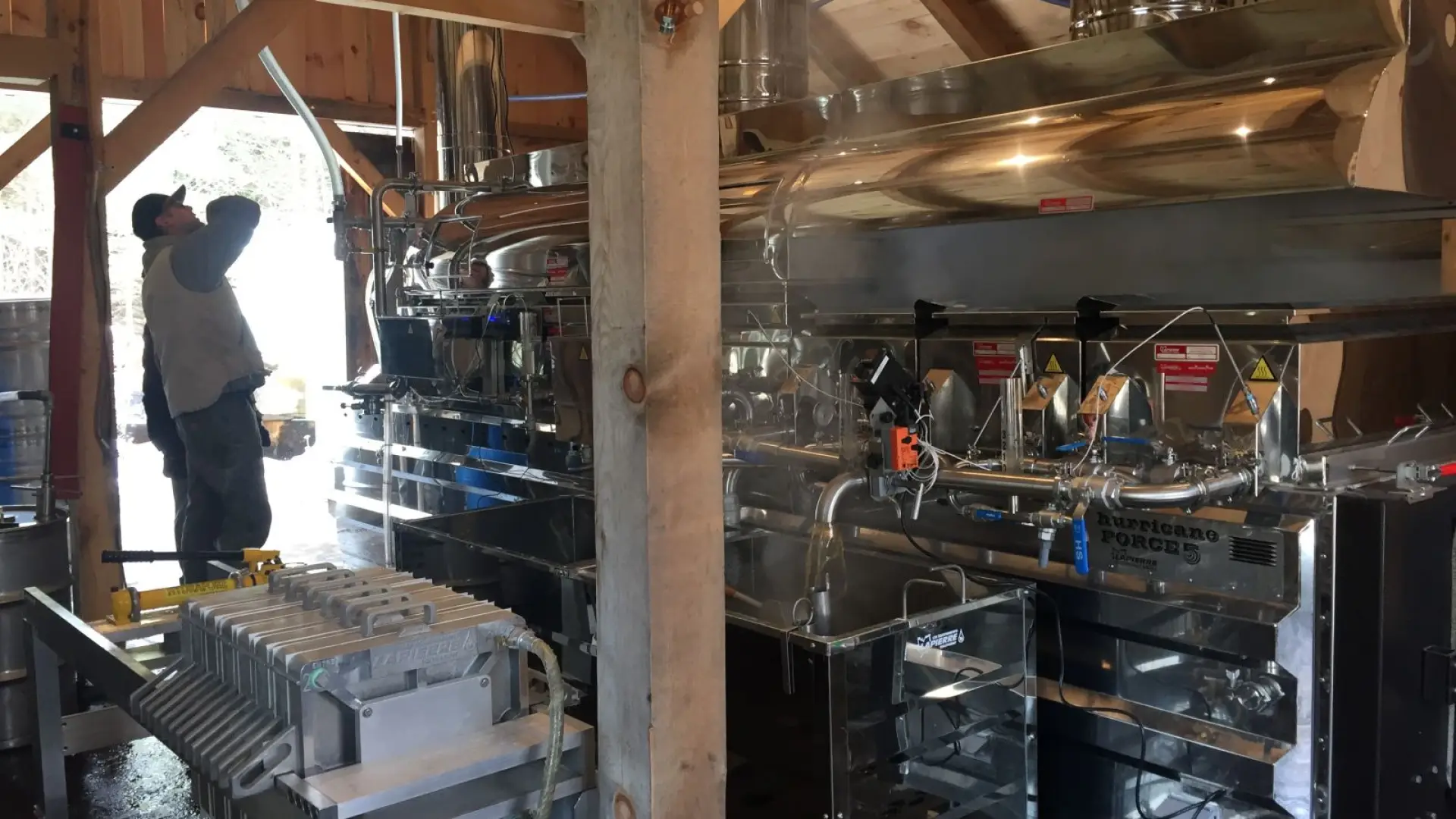
For sap collection Black Rooster Maple has 3,500 taps in total. Behind the sugar house there are 1,000 taps and 2,500 more taps on land further down the road. The raw sap collected from trees consists of about 98% water and minerals and 2% sugar. The finished maple syrup will be 66% sugar content. It takes 45 gallons of raw sap to make one gallon of finished syrup.

Kirk broke down the process explaining that to convert raw sap into maple syrup is really just the removal of excess water in two steps. First, through reverse osmosis, 8,600 gallons of raw sap is filtered and pressurized at the molecular level. A molecule of sugar is larger than a molecule of water so the water passes through the sugars to become the waste product. The sugar is then filtered out and boiled in the evaporator. The excess water will be used again to rinse out machines and to clean other messes.
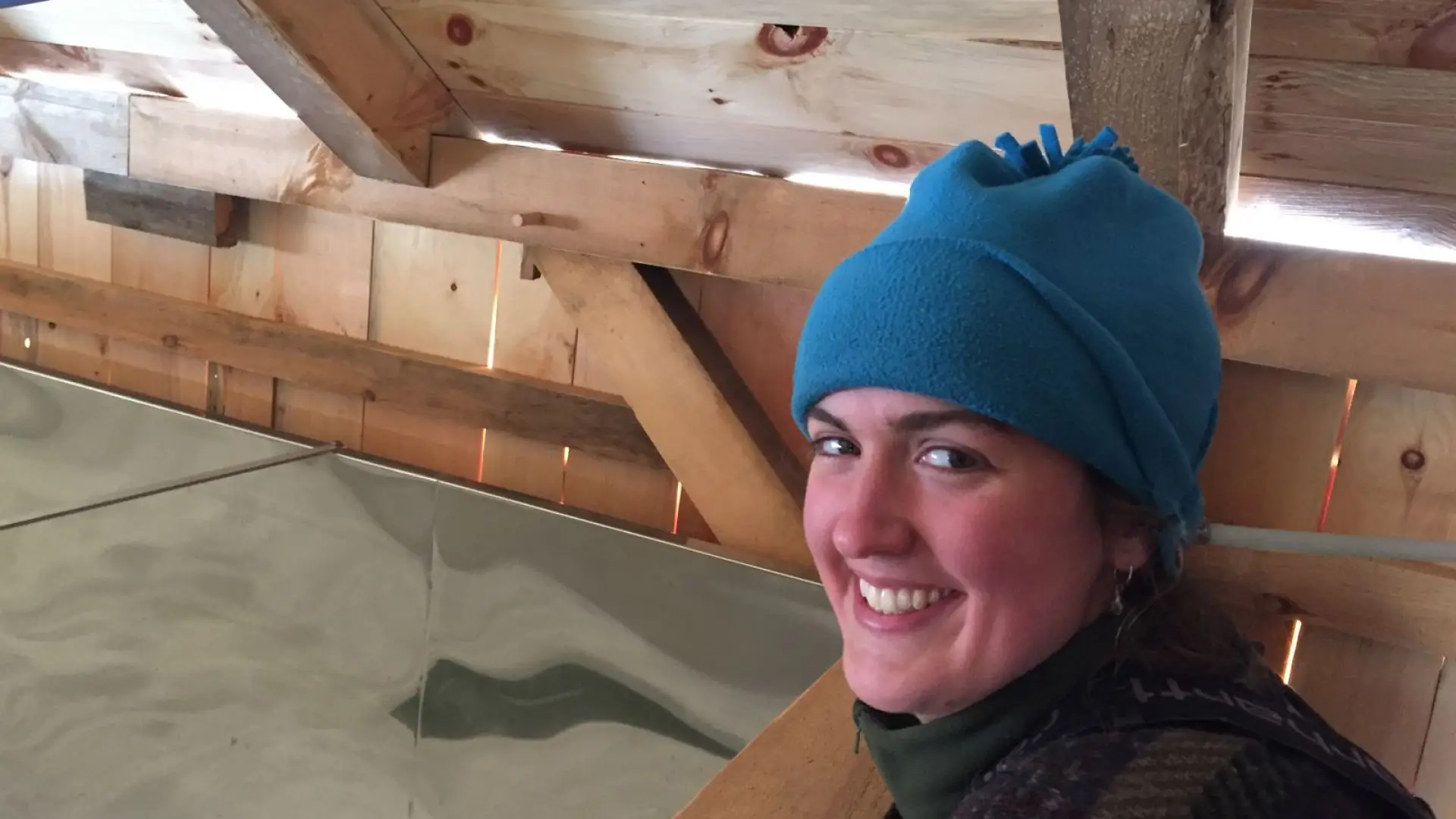
The super sweet sap from this process is then gravity fed into the evaporator. The evaporator, despite its Frankenstien-esque presence, is really just a giant woodstove with a series of pans on top. (Well, that’s the nonscientific description of it).
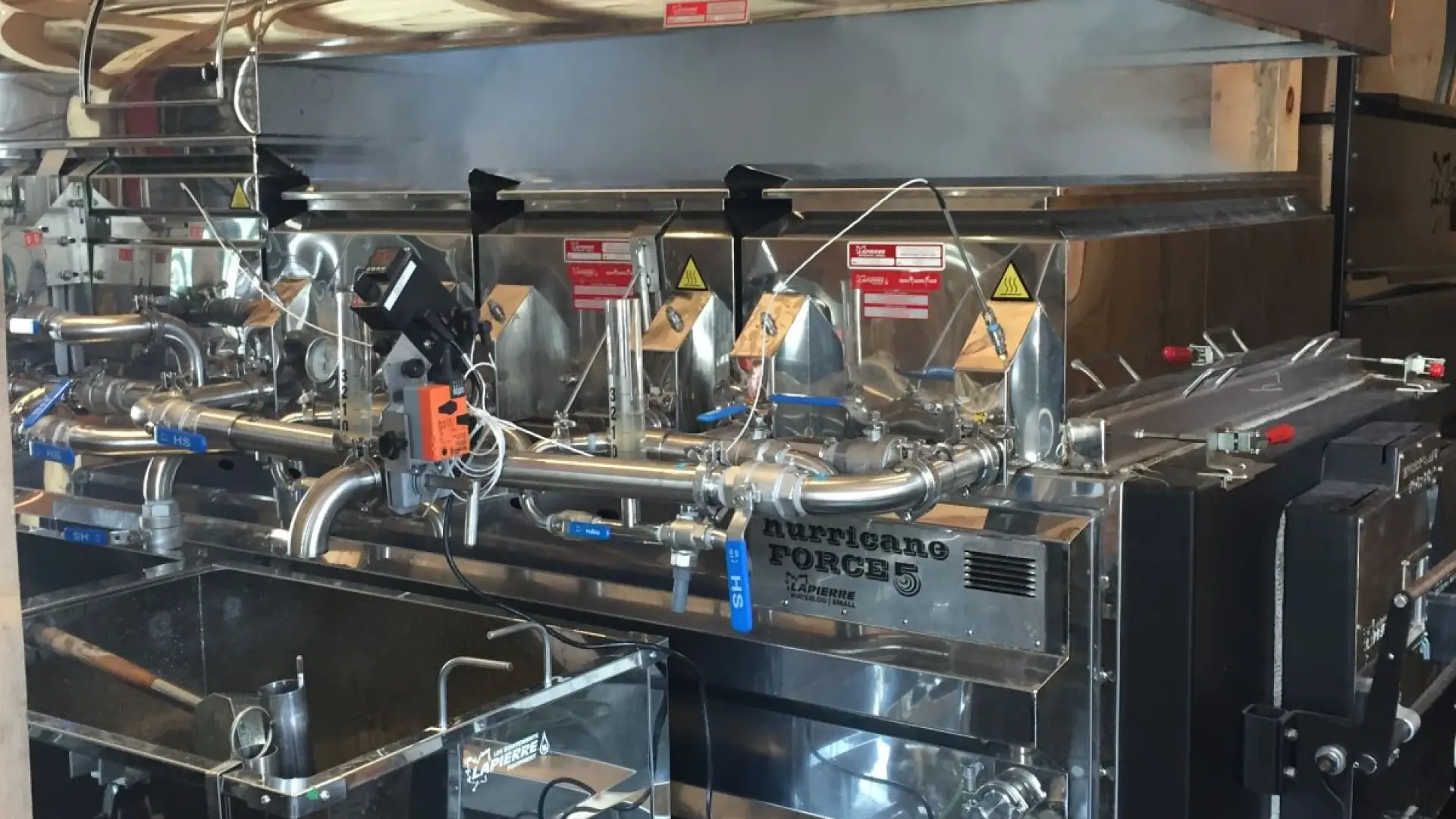
In the evaporator, the cooler, less dense sap is pushing the hotter, more dense sap closer to syrup. The density of syrup is what determines when it’s ready, with 66 to 67% sugar being the ideal. This entire process is weather dependent because the boiling point of water is affected by how warm or cool it is.
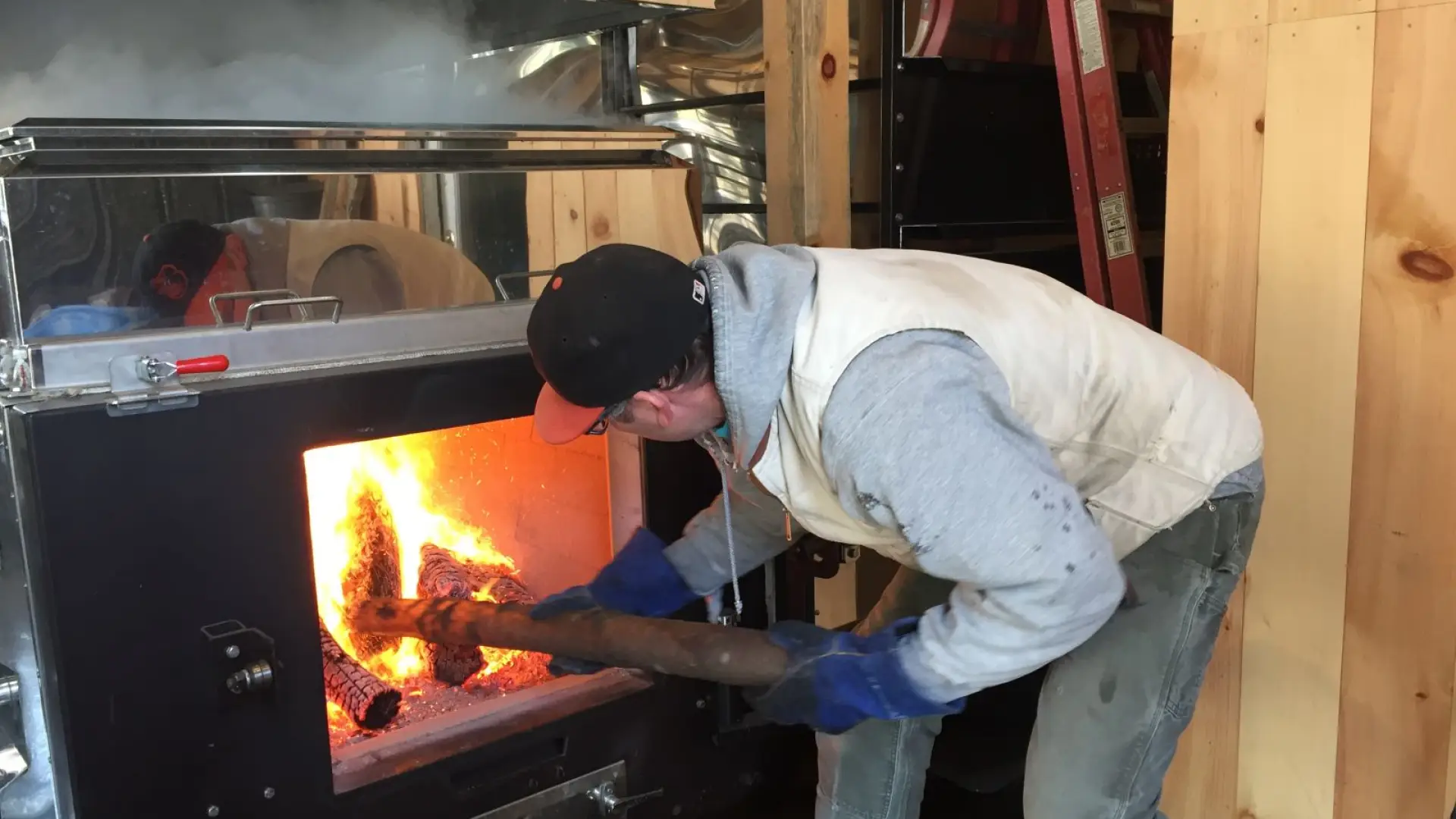
The maple syrup is finally complete after a filtering process, which removes natural elements from the syrup, like bark, an ant, or the sap’s sand.
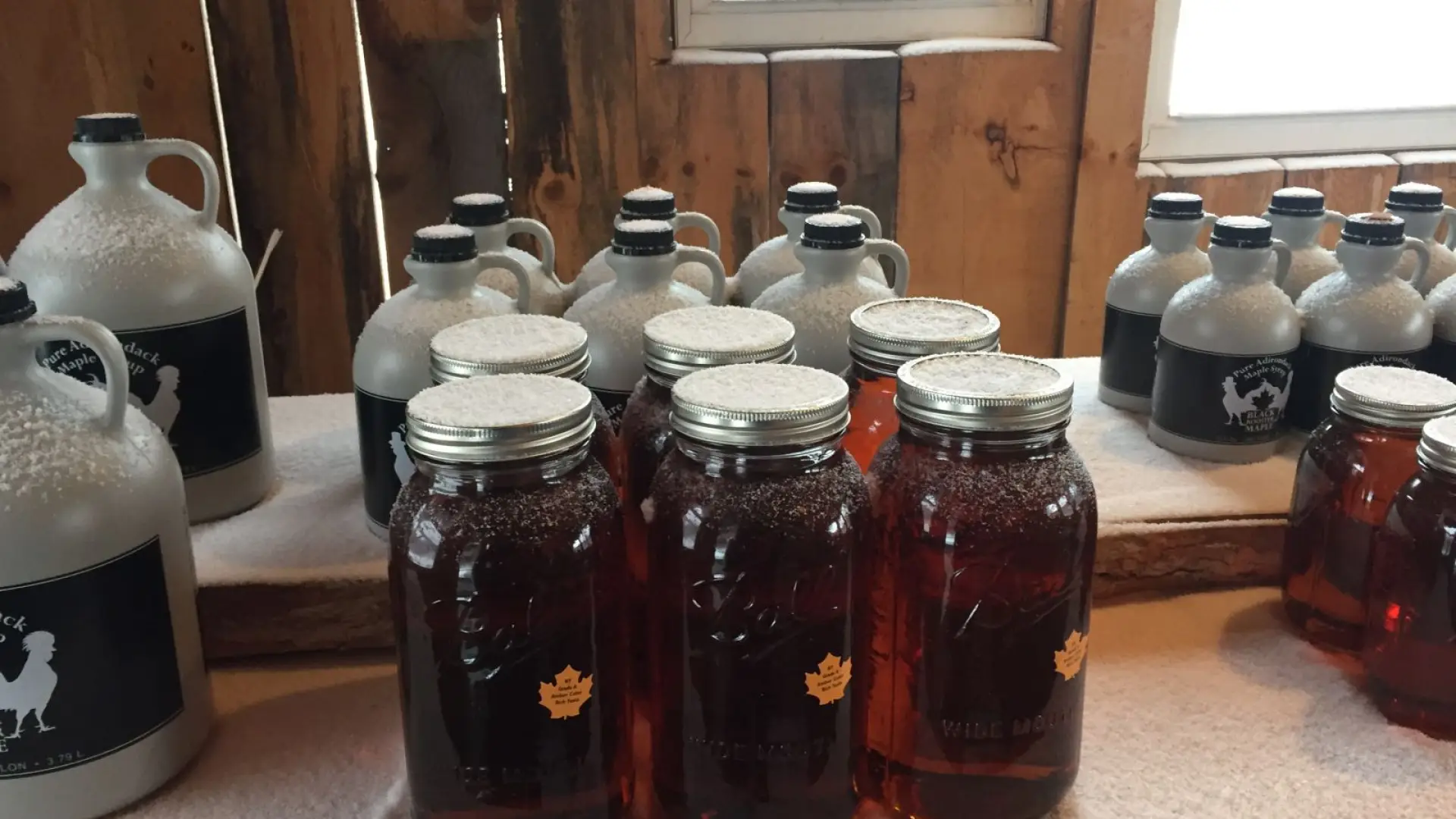
Perhaps the most exciting and unique project at Black Rooster is their partnerships with Bob Hocker, a barrel maker for U.S. Barrel in Wilmington, and Gristmill Distillers in Keene. Black Rooster Maple uses the barrels to age the syrup, creating their Bourbon Barrel Aged Maple Syrup. The barrels are made with Hudson Valley white oak by Hocker and used by the distillery. Then Black Rooster uses the barrel to age and naturally flavor their syrup. Once this process is complete, Black Rooster returns the barrel back to Gristmill, where they use the barrel again to flavor their bourbon with maple. The process will continue, ensuring four uses out of one barrel. Local breweries are planning on joining in and sharing the barrels. You can also find the Black Rooster Maple Porter at Lake Placid Pub & Brewery. I can’t think of a more delicious and gratifying partnership. And it’s all local.

The last two weekends in March are Maple Weekends when you can stop by Black Rooster for tours, and you can email to arrange one as well. Black Rooster Maple is not only a great local business, but it’s located in one of the most scenic regions of the Adirondacks, surrounded by the High Peaks. Check out the lineup of events for the upcoming Maple Weekends.
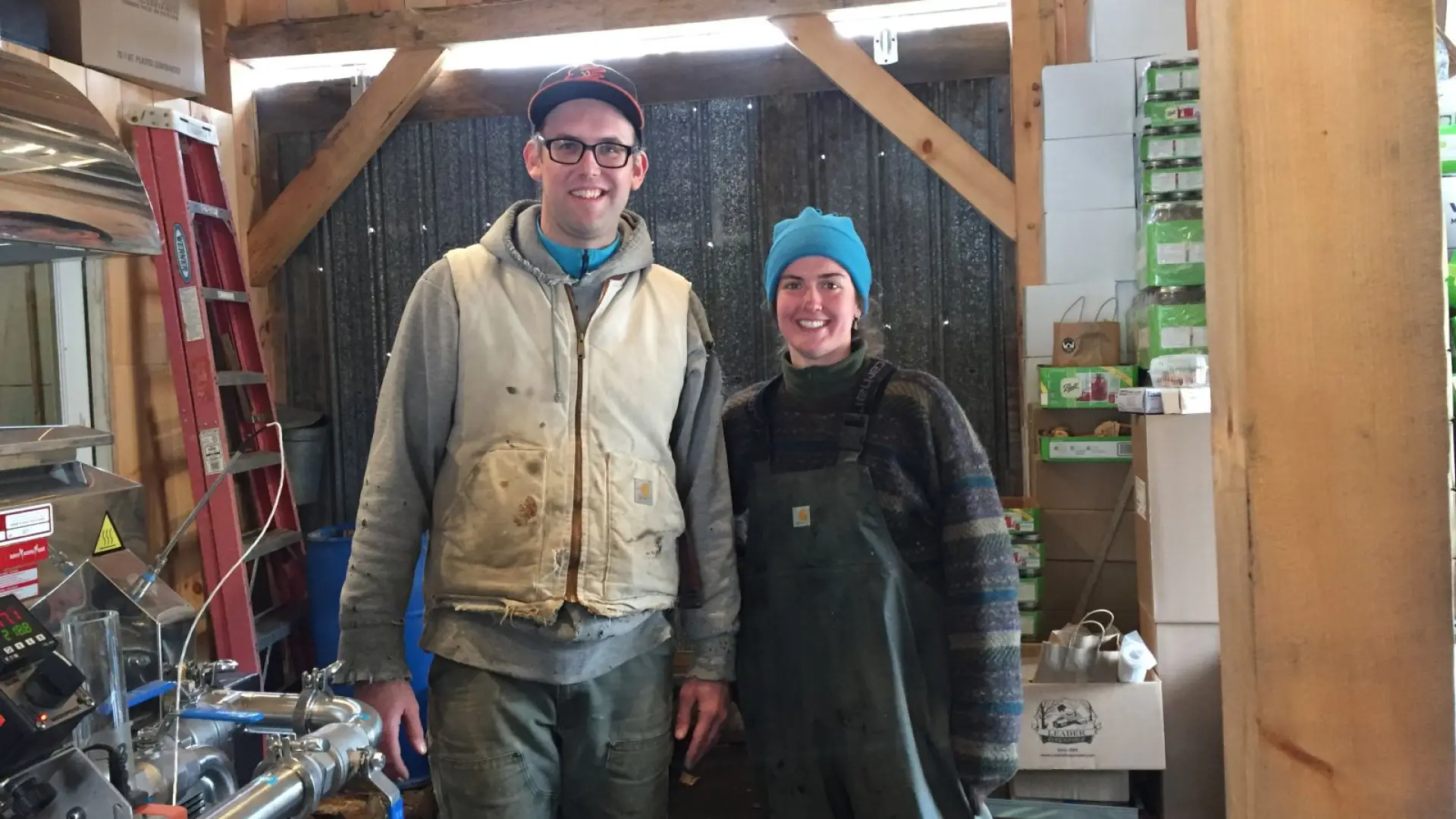
Dreaming of delicous maple? Start planning your trip today! Find your ideal lodging and plan for your perfect fun.